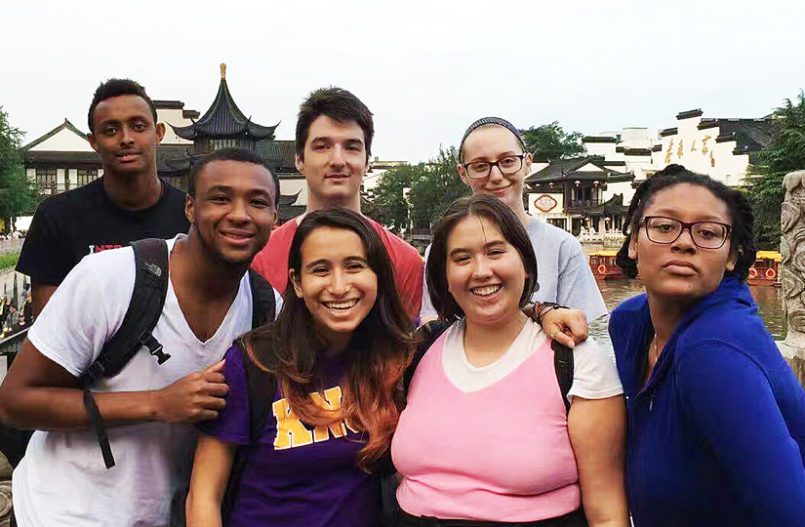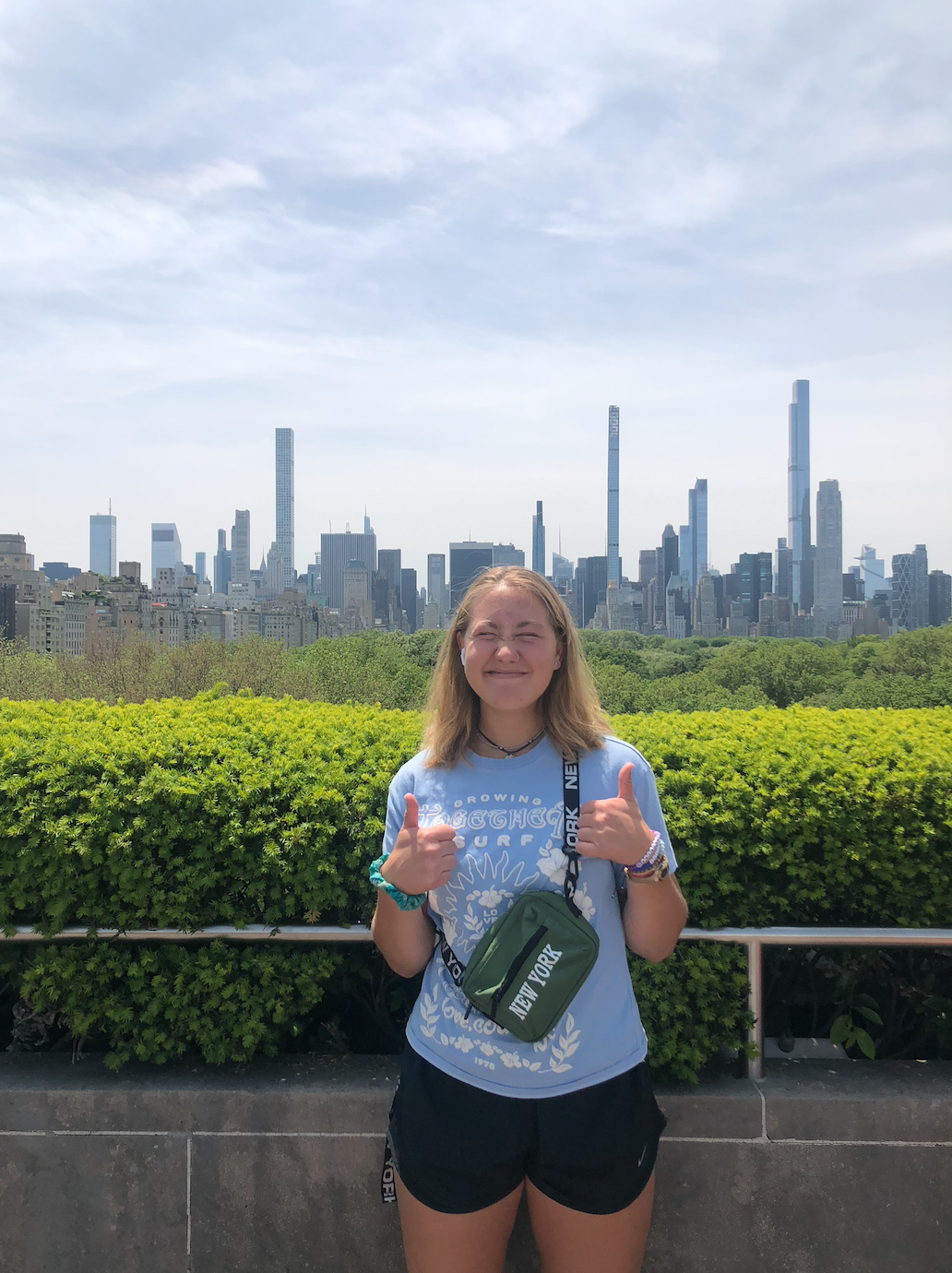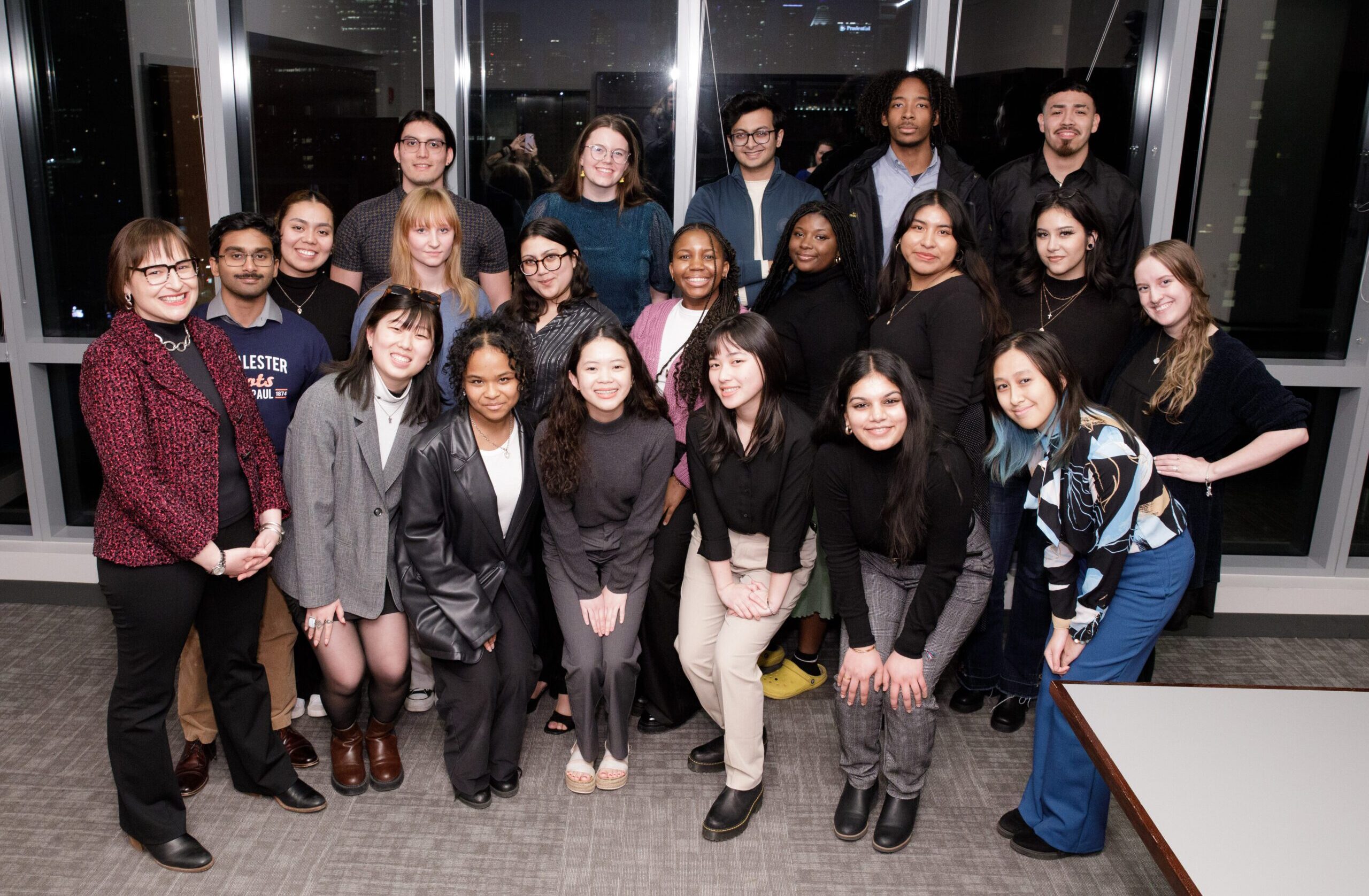During a week of vacation in early October for China’s National Day, students on the ACM Shanghai: Perspectives on Contemporary China program and Visiting Faculty Director Weihong Du took a trip to Nanjing for three days of sightseeing. Here’s what Professor Du wrote about their excursion.
Nanjing Day 1 — Today’s Specials: Hotpot and Fuzimiao
Departing from Shanghai, the students got to experience China’s high-speed rail, which, in the fastest trains, can move travelers around at over 250 kilometers per hour in a clean, comfortable atmosphere.
After arriving in Nanjing and getting settled in our hotel, we headed out to lunch before tackling a full evening of sightseeing in the Fuzimiao (Confucius Temple) area. For lunch, the students got to experience authentic Beijing hotpot. Hotpot is an amazingly satisfying meal — a large pot is kept boiling in the center of the table while ingredients like thin meat slices and a variety of vegetables are placed inside to cook in a delicious broth. It is a staple of Chinese cuisine, and a must-try for anyone interested in China’s culinary traditions.
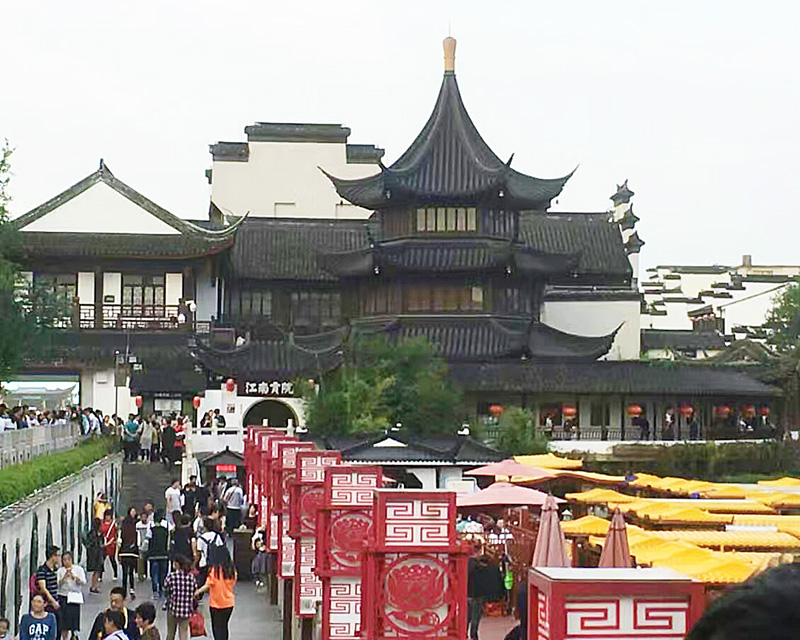 The Confucian temple in the Fuzimiao area.
The Confucian temple in the Fuzimiao area.
“Fuzimiao” means Confucian Temple, and there was almost no end to the sights to see. Aside from the area’s namesake, the Confucian temple, there are numerous tourist attractions and shops, a civil service examination museum, and an old civil service examination hall all set against the backdrop of the picturesque Qinhuai River.
The Confucian temple was first built there in 1034 during the Song Dynasty. Since that time, it went through various stages of abuse and repurposing during China’s tumultuous history, but it was restored to its present state in 1985.
The museum and examination hall in Fuzimiao both relate to the old Chinese tradition of the Civil Service Examination. The Civil Service Exam was a grueling test of one’s command of the Confucian Classics and the way that the imperial Chinese courts from as early as the Han Dynasty (206 BC – 220 AD) selected government officials.
After looking around Fuzimiao as a group and sampling some delicious snacks and desserts, we split up for the evening with some students exploring more of the area and others enjoying the local Aqua City mall.
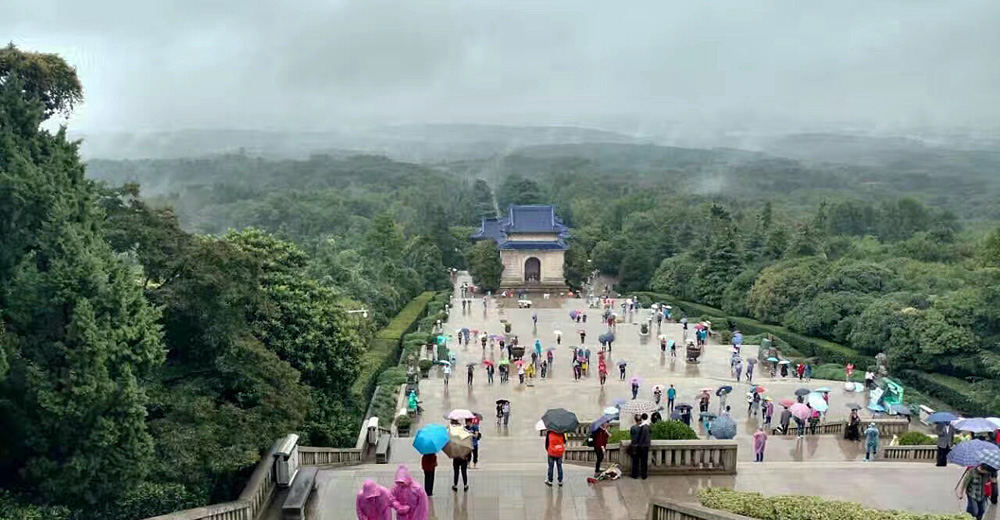 View from the top of the steps of the Dr. Sun Yat-sen Mausoleum.
View from the top of the steps of the Dr. Sun Yat-sen Mausoleum.
Nanjing Day 2 — A Little Rain Must Fall: Monuments and Memories
On the second day of our trip to Nanjing, we visited two sites and contended with torrential rain, beginning at Dr. Sun Yat-sen Mausoleum.
Dr. Sun Yat-sen was a leader of the democratic movement in China and played a prominent role in bringing down the last feudal dynasty in 1911. He is revered by the Chinese, and seen as a fighter for the people. The grounds of the mausoleum are enormous, roughly 20 acres, and stunning in their natural beauty.
When we arrived at the mausoleum site, it had already begun to rain fairly hard. Pressing on, we walked for what seemed like forever and up what was literally hundreds of steps while our shoes became thoroughly soaked. When we finally reached the top of the stairs, the beauty of the place was overwhelming, making the difficult and wet trek there worth every minute.
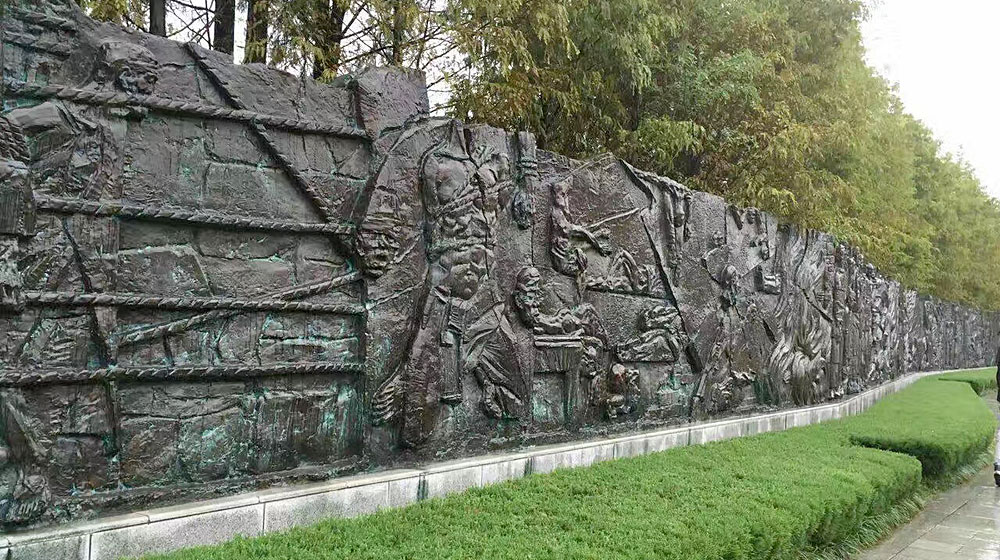 On the grounds of the Nanjing Massacre Museum.
On the grounds of the Nanjing Massacre Museum.
Afterward, we headed to a memorial site for the people who were killed in Nanjing (estimated to be 300,000) during the Japanese occupation that began in December 1937. The event is known as Nanjing Massacre, and it is a seminal moment in the years leading up to World War II, and in Chinese history in general.
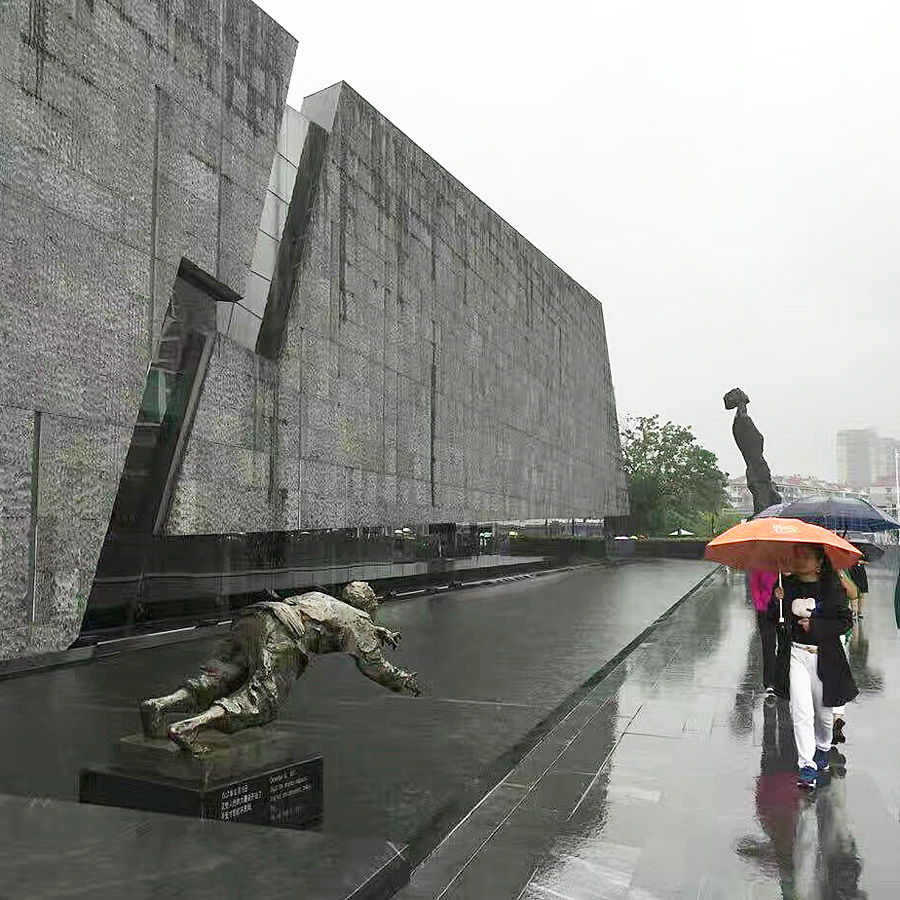
Despite the dark tone of the memorial, it was an important experience, as becoming familiar with a country’s past oftentimes gives deep insight into its present.
The memorial complex, built atop one of the largest mass graves from the massacre, is strikingly beautiful. The sculptures and architecture are second to none, and the gardens, though purposely minimalist in many ways, convey, and indeed generate, a great sense of respect and tranquility. Full of incredible historical resources, this memorial was a rich resource for our students to see.
 On the set of the reality TV dating show, You Are the One.
On the set of the reality TV dating show, You Are the One.
Nanjing Day 3 — Reality (TV) Sets In: You Are the One
Our third and final day in Nanjing was designated for an activity that is sure to be memorable — being audience members for the filming of a reality dating show in China.
 Hot ticket — A pass to be in the studio audience for You Are the One.
Hot ticket — A pass to be in the studio audience for You Are the One.
The filming event was included in our Nanjing trip as both a general cultural enrichment activity for our ACM students, and as a field trip component of the Chinese Popular Culture course I am teaching at East China Normal University this semester.
The show is called You Are the One, and the filming lasted four and one-half hours. Although a bit lengthy, it was really interesting to watch the various contestants and how the whole process played out.
After a long day of filming, we caught another high-speed train back to Shanghai to round out our Nanjing adventure.
By Dr. Weihong Du, Associate Professor of Chinese Studies and Director of the Asian Studies Program, Knox College
Learn more about the Shanghai: Perspectives on Contemporary China program.






